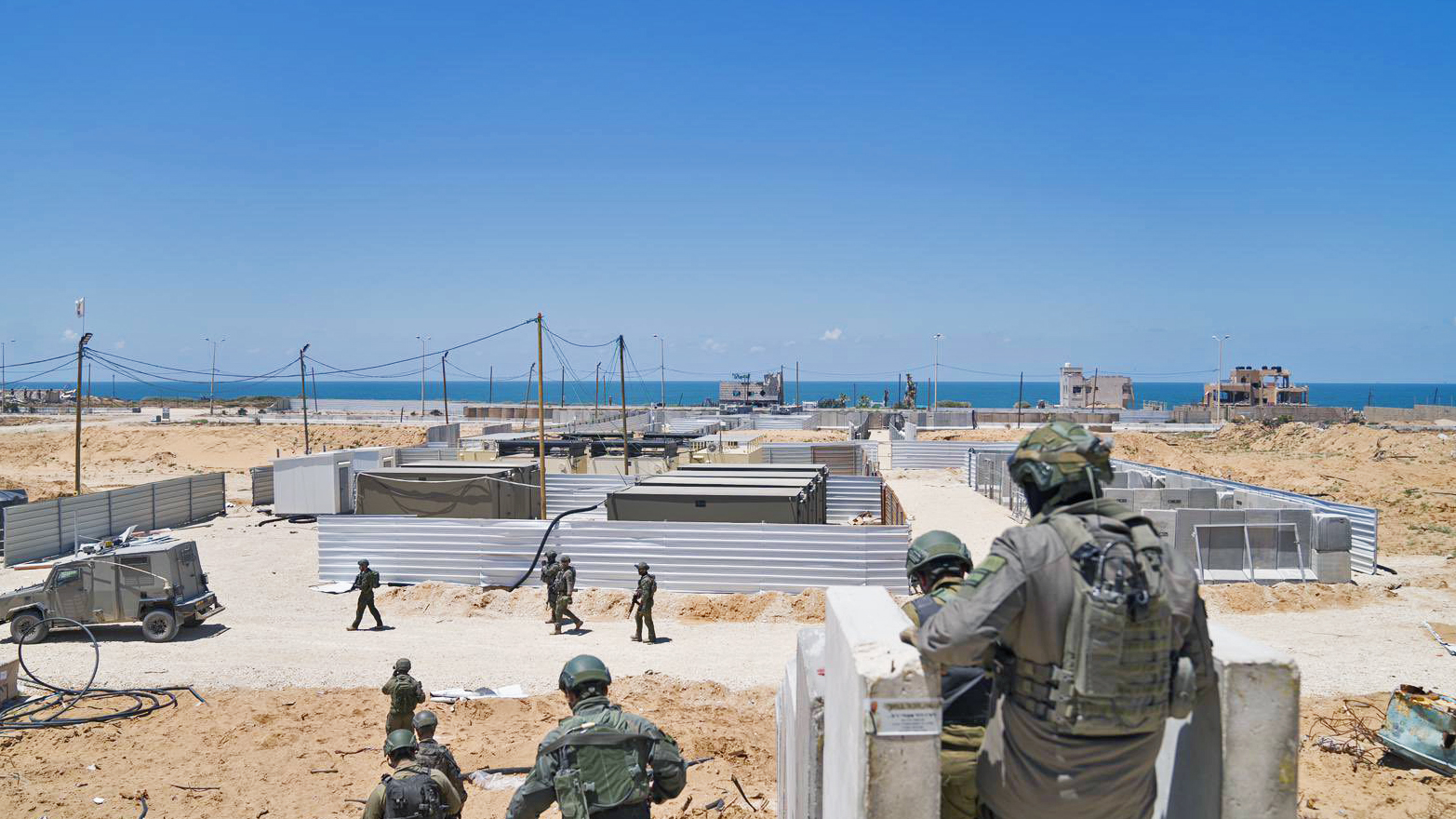The U.S. military has finished building the floating pier that will help humanitarian aid flow into Gaza. While the basic construction work on the temporary pier was completed nearly two weeks ago, poor weather meant it was only moved into its final position overnight. It’s now almost ready to begin accepting aid that is needed more than ever, especially as the Rafah land crossing to Egypt has been closed for more than a week.
The first photo of the completed pier was published on social media today by the Israel Defense Forces (IDF), whose troops are responsible for providing security on the beachhead.
Construction of the Joint Logistics Over-The-Shore (JLOTS) capability was ordered two months ago by President Joe Biden. The cost of the project is around $320 million, the Pentagon says.
“The pieces of this pier were loaded aboard ships on the east coast of the United States,” Vice Admiral Brad Cooper, the deputy commander of U.S. Central Command (CENTCOM), explained to members of the press, including TWZ, today. “[They were] transported 6,000 miles across the ocean, and principally assembled off the coast of Gaza.”
Assembly of the final few pieces took place in the Israeli port of Ashdod, around 10 miles north of Gaza, Cooper confirmed, from where they were moved into position by military vessels.
Previously, rough sea conditions had made it too dangerous for U.S. and Israeli troops to complete the installation of the two main components that make up JLOTS: a floating platform and a causeway. This work was finally completed at 7:40 a.m. local time this morning.
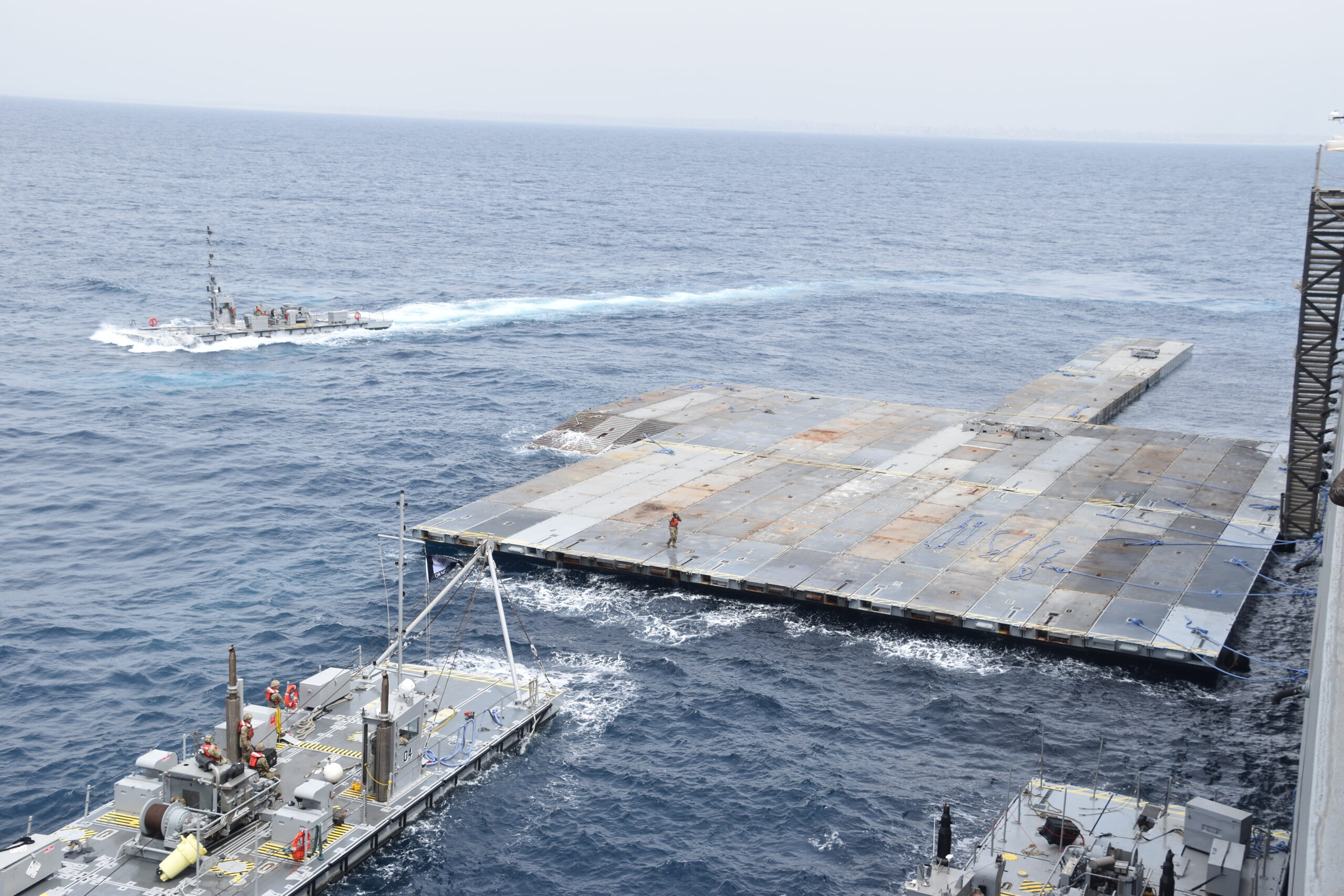
U.S. officials say they expect the delivery of food and other crucial aid via the pier to begin within the next 24 to 48 hours. According to Vice Admiral Cooper, hundreds of tons of aid is now ready to be delivered, with thousands more tons in the pipeline.
Meanwhile, aid agencies warn that much of the population in Gaza faces imminent starvation amid the ongoing Israel-Hamas war.
The process of getting this aid into Gaza starts on the island of Cyprus in the eastern Mediterranean, where it will be inspected, palletized, and loaded onto ships. Fourteen ships of different sizes are now expressly assigned to the mission, coming from the United States and partner nations.
Vice Admiral Cooper confirmed that three additional U.S. ships will join in the coming week, while the United Kingdom is providing the amphibious ship RFA Cardigan Bay for logistics support. “We also expect others to join here in the coming days as we go forward,” Cooper added.
These vessels will travel roughly 200 miles to the floating platform several miles off the Gaza coast. The palletized aid will then be loaded onto smaller U.S. military vessels: logistics support vessels (LSV) and landing craft utility (LCU), each of which can carry between five and 15 truckloads of aid. These vessels will shuttle the aid to the causeway, from where trucks driven by a third party — not U.S. troops — will bring the aid into Gaza itself.
CENTCOM confirmed that the United Nations would be responsible for receiving the aid and coordinating its distribution.
While delivering aid to a region on the brink of famine presents its own security issues, let alone the dangers of this being an active war zone, Vice Admiral Cooper confirmed that no U.S. troops would set foot in Gaza. However, around 1,000 U.S. service members are involved in the maritime corridor operation just off the coast.
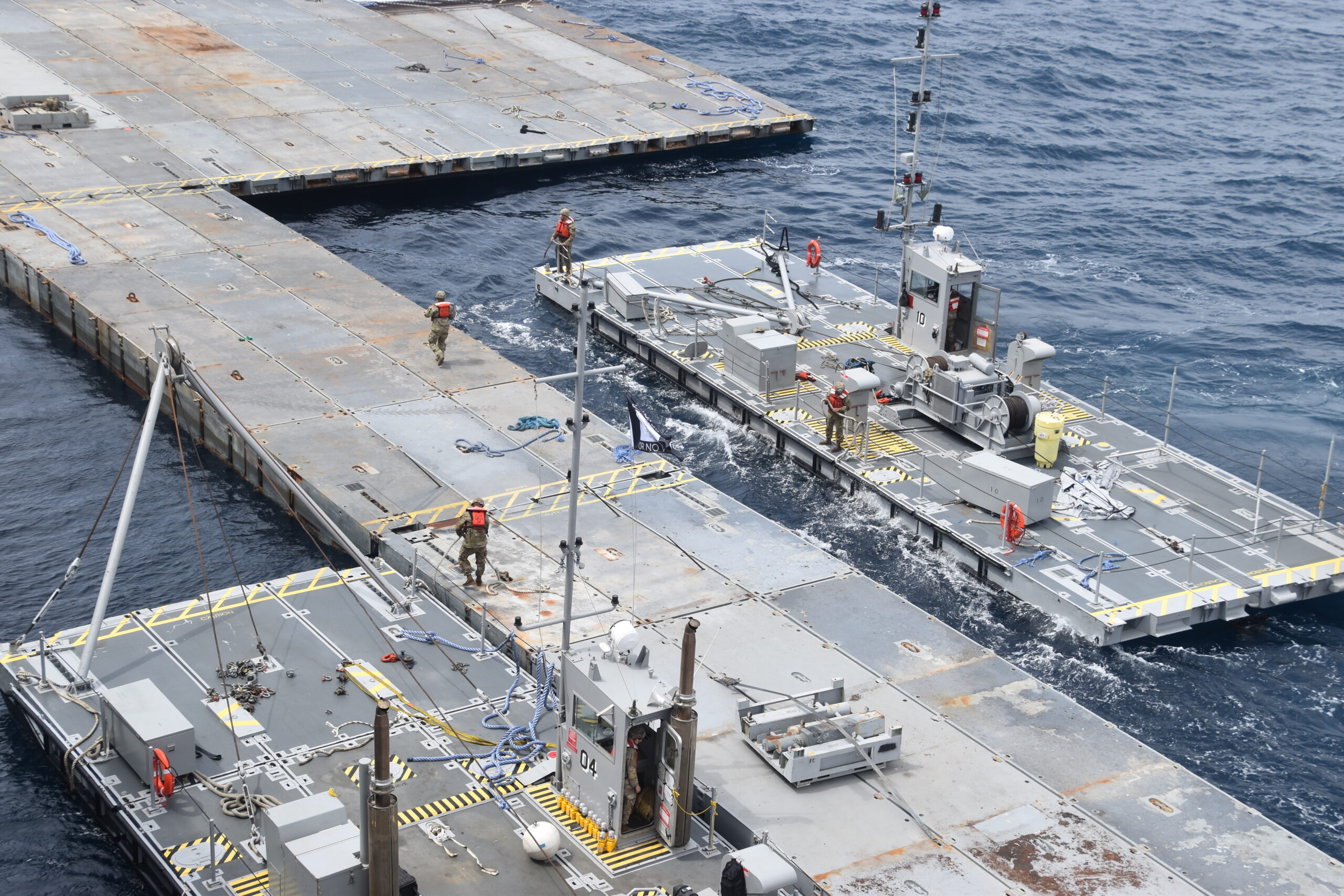
“Let me be absolutely clear,” Cooper said today, “the US military’s only role in this effort is to provide our unique logistics capability to enable the delivery of life-saving humanitarian aid to the people of Gaza by USAID [the United States Agency for International Development], and our international partners.”
The security situation will be “monitored closely,” U.S. officials said, and the maritime route could be shut down if needed, “even just temporarily.”
On station in the eastern Mediterranean are two U.S. Navy warships, the guided-missile destroyers USS Arleigh Burke and USS Paul Ignatius. These could potentially be called into action to protect U.S. troops offshore as well as allies on the beach.
This reflects concerns addressed by TWZ in the past, around the fact that the floating pier is in range of Hamas rockets and missiles.
Back in April, the coastal location where the causeway structure is now positioned was hit by mortar fire. The attack caused only minor damage and U.S. ships involved in the operation were offshore at the time, the Pentagon confirmed.
Humanitarian officials have said the population in Gaza needs at least 500 lorryloads of food, fuel, and other essentials each day, but has so far received only a small fraction of that. The situation was worsened after Israel put restrictions on some aid entering the Palestinian territory.
In particular, the major Rafah crossing into Egypt has now been closed for more than a week, after Israeli forces took control of the Palestinian side when it launched an offensive into the territory’s southernmost city.
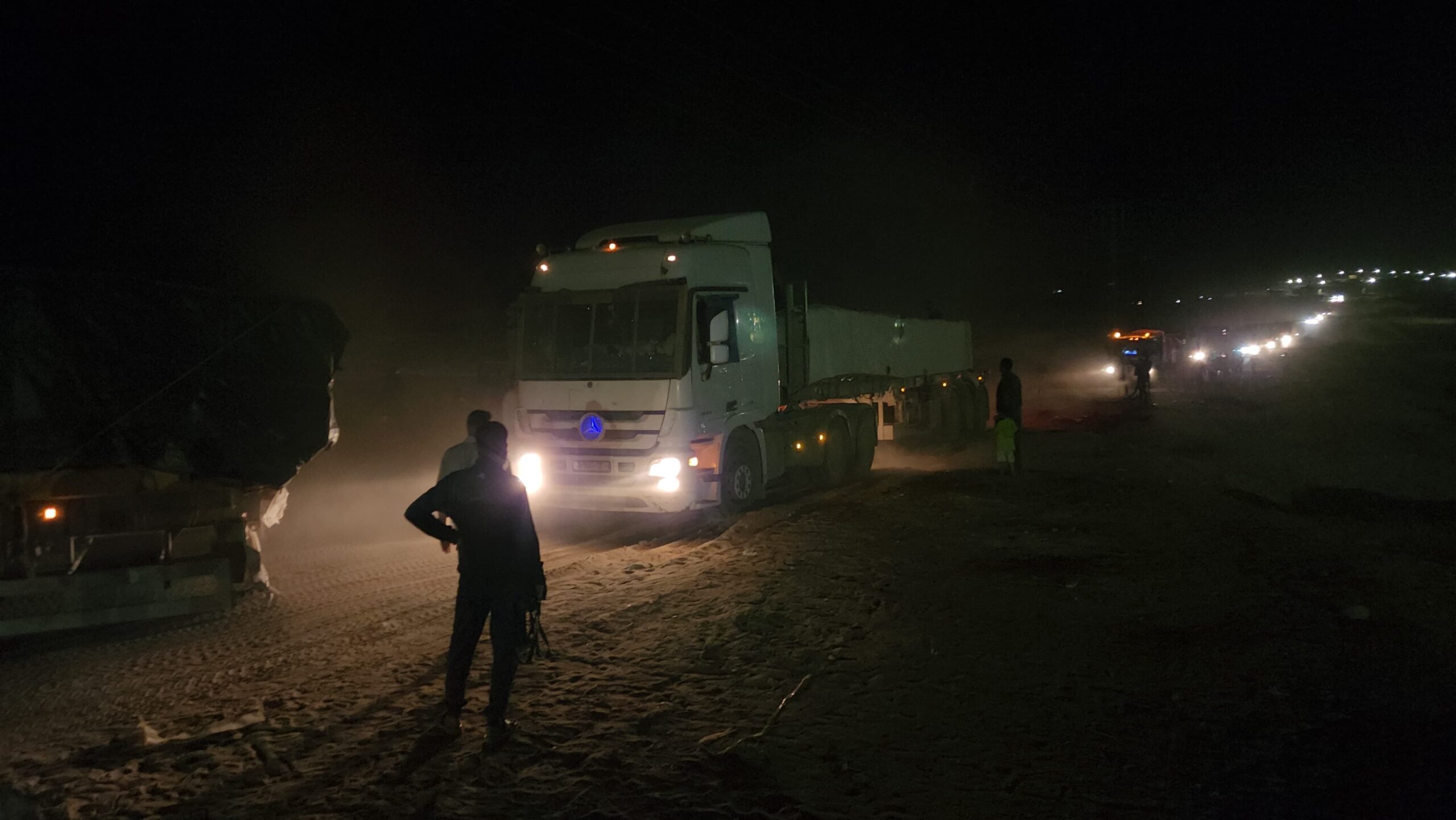
A nearby crossing, Kerem Shalom, remains open, but its capacity to receive aid is limited by fighting nearby and a lack of staff to operate it.
JLOTS is not supposed to be a substitute for the overland aid routes, Washington has stressed, with delivery by road routes being much quicker and more efficient — provided the border crossings are open.
Last month, U.S. officials said that JLOTS was initially expected to process about 90 trucks worth of aid each day, before working up to a total of 150 per day once at full capacity. Even this latter figure is notably well short of the 500 lorryloads officials say are required.
“To complement the provision of aid through land routes, which we know is the most efficient and effective pathway to move the necessary volume of assistance, we are pursuing multiple methods to deliver aid into Gaza from the air and now from the sea,” Vice Admiral Cooper added. “To date, the U.S. with over a dozen partners has executed 38 humanitarian airdrop missions. These missions have focused on dropping humanitarian assistance from the air, predominantly into north Gaza. With our partners, we have cumulatively provided more than three million meals into Gaza by airdrops, more than one million of which have been from the U.S.”
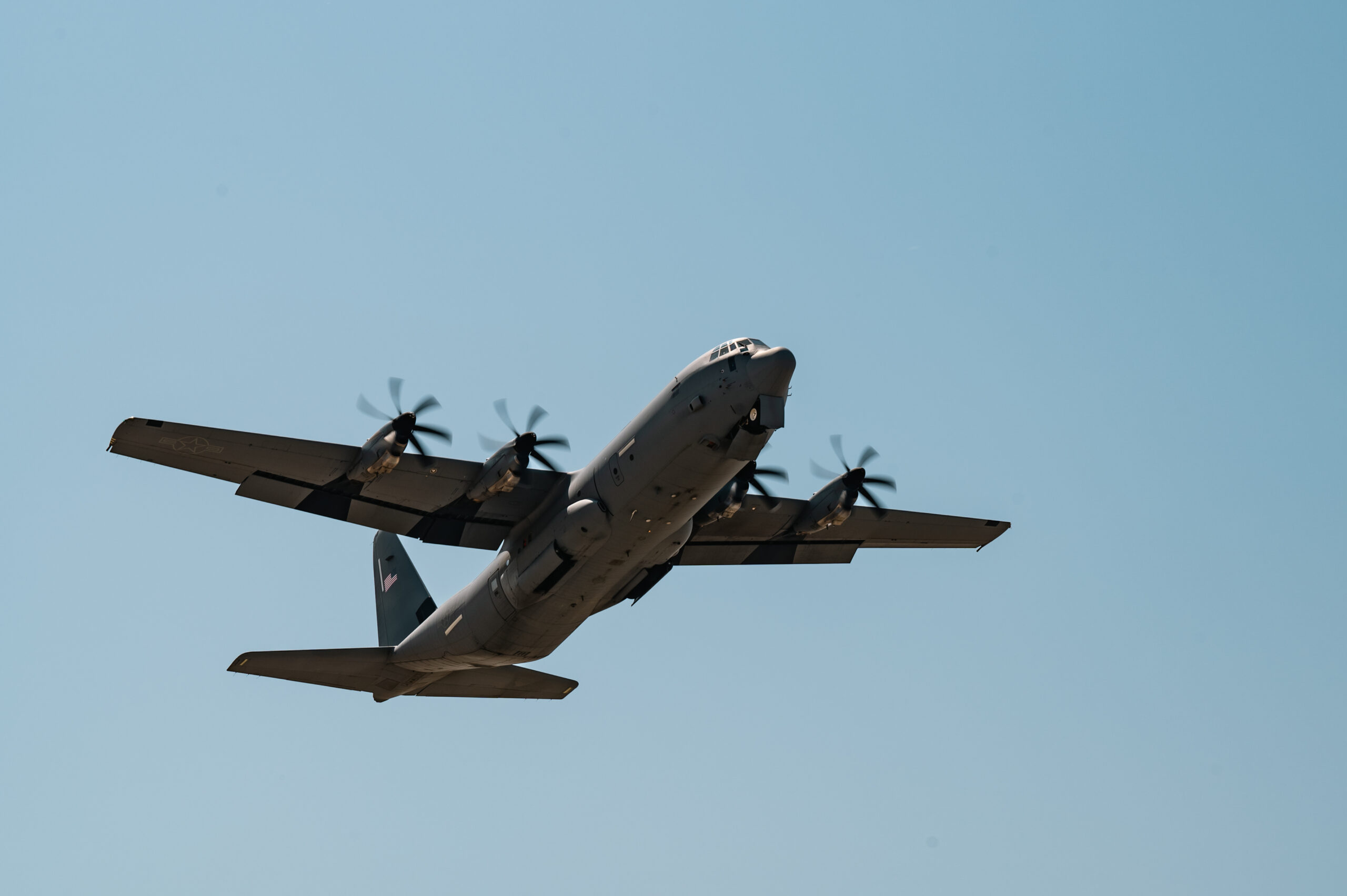
Cooper confirmed that airdrops will continue alongside the delivery of aid from the sea.
Clearly, there remain questions about the security of the temporary pier. It is also expressly considered an adjunct to existing aid routes rather than an answer in itself. Nevertheless, with JLOTS set to be processing aid for Gaza within the next day or so, it will provide much-needed relief for the region in a critical time of need.
UPDATE: 2:00 PM EST —
A picture, seen below, has now emerged looking to show the new pier anchored to the beach in Gaza.
UPDATE: 4:30 PM EST —
U.S. Central Command (CENTCOM) has now released additional pictures showing the pier being established and anchored in position.
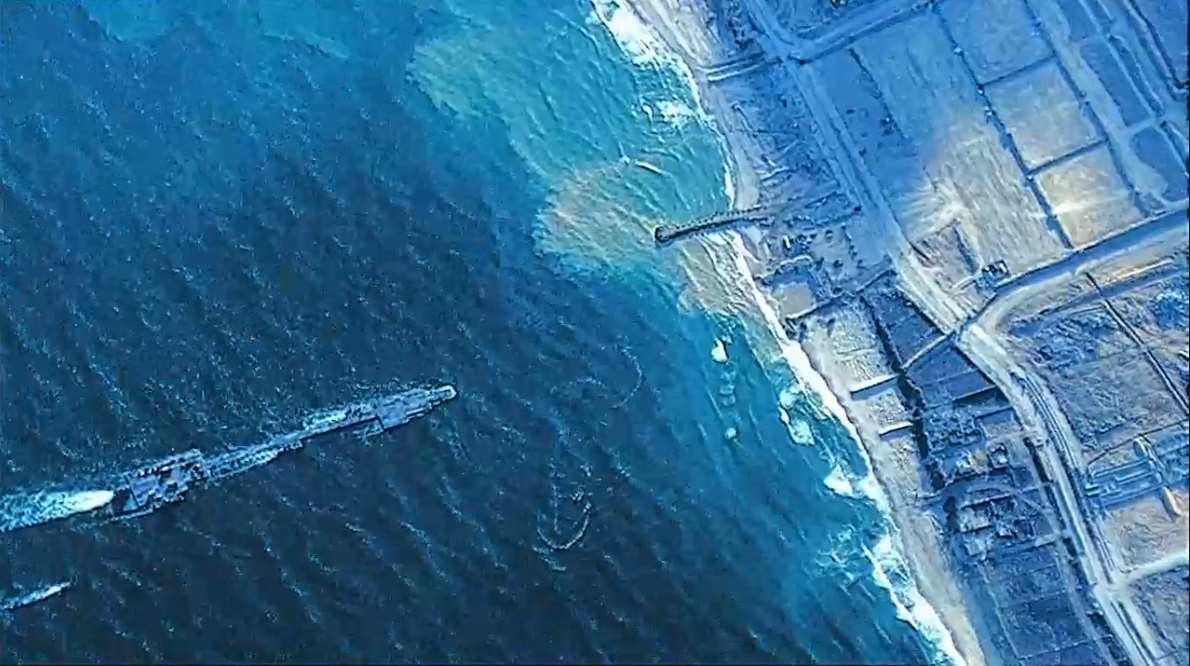
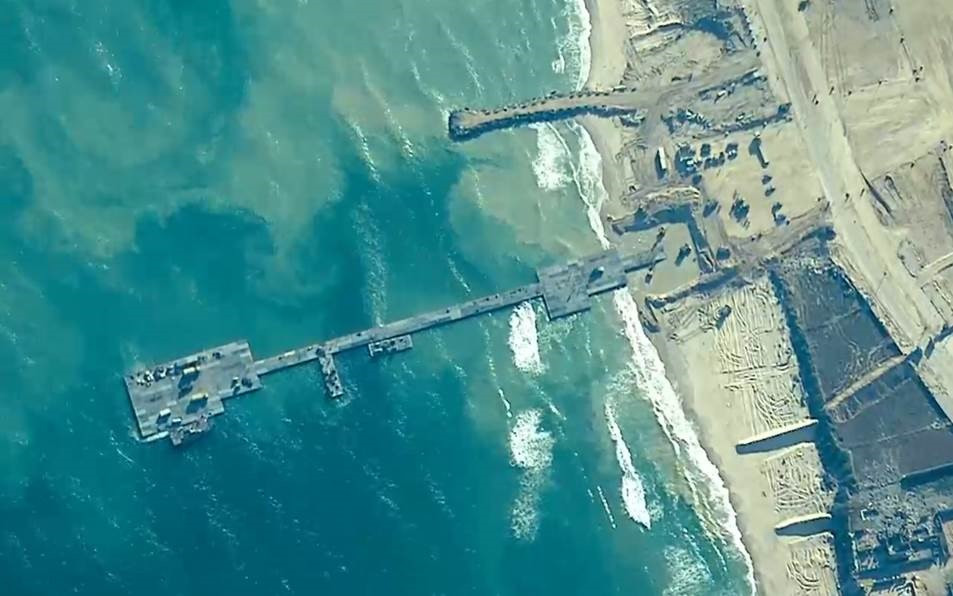
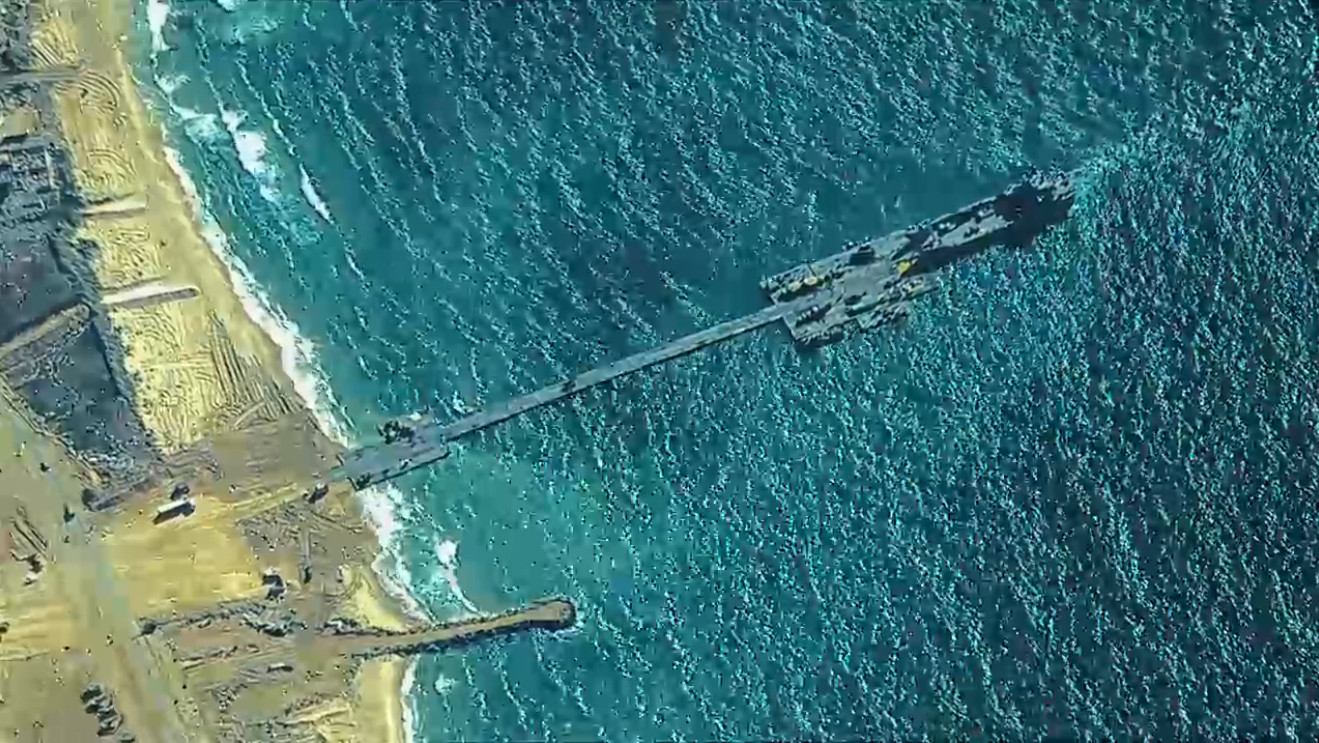
Contact the author: thomas@thewarzone.com
